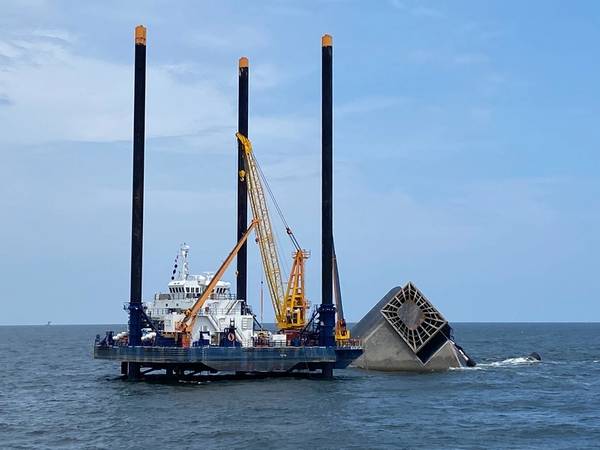
The Seacor Eagle is on scene for salvage and pollution response operations following the fatal capsizing of the Seacor Power off Port Fourchon, La. (Photo: Brendan Freeman / U.S. Coast Guard)
Salvors have started removing fuel from the tanks of a lift boat that capsized in the Gulf of Mexico last month, the U.S. Coast Guard said.
The 234-foot Seacor Power could have been carrying up to 35,000 gallons of fuel, lube oil, hydraulic and waste oil when it overturned in rough weather on April 13, about eight miles south of Port Fourchon, La., according to the Coast Guard. No spills have been reported.
Salvage crews arrived at the wreck site over the weekend and began lightering operations on Monday using a method called hot tapping, which involves drilling into the fuel tanks and making a hose connection without ruining the integrity of the tank. Divers are working above and below the water from another Seacor Marine lift boat, Seacor Eagle, which is being used for salvage and pollution response efforts.
The Coast Guard said on-scene weather conditions will be monitored very closely and that operations will be paused if seas exceed four feet, wind speeds surpass 15 miles per hour or if currents grow stringer then 1.25 miles per hour. The agency is also asking mariners to maintain a distance of at least one mile from the wreck site.
Six crew members were saved when the Seacor Power capsized in heavy seas and winds last month, and the bodies of six deceased personnel were recovered in the days following. The Coast Guard called off its search on April 19 with seven still unrecovered.
The incident has been declared a major marine casualty, and the National Transportation Safety Board (NTSB) has joined the Coast Guard-led investigation.
Phoenix International and Donjon Marine have been contracted for dive and salvage operations.





No comments:
Post a Comment